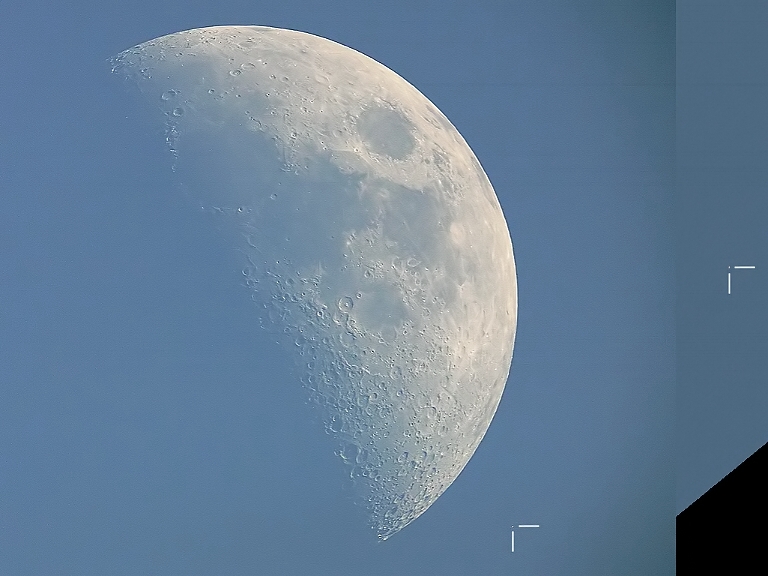
Parallax is a technique and tool used to measure predominantly distances to stars using the apparent shift of a star of
interest for two or more ground-based observers whose geographical locations differ but who coordinate their efforts. By
applying very basic geometry involving isosceles triangles and the observed intervening angle produced by the apparent
shift when simultaneous observations (or photographs) are precisely overlayed, one can derive an estimate as to the
distance of the star (or planet) of interest using, as basis, the physical distance between the two observers.
Note: The near-occultation of Regulus by the moon during the afternoon of
May 23, 2007 was
the basis for the image below where the author and a very good friend (Pete Lawrence) coordinated their efforts so as to
capture the apparent location of Regulus near the moon and as observed from Athens, Greece and Selsey, UK. With a physical
difference of approximately 2370 km between the
two observers, analyses before the event suggested a favourable and dramatic difference in the apparent location of Regulus
between the two observers and which was confirmed as per the image below (the view from Athens involves Regulus nearest the
lunar limb below whereas the view from Selsey involves Regulus furthest from the lunar limb below). By studying the shift
in the apparent location of Regulus in conjunction with the distance between the two ground-based observers, one can derive
an estimate as to the parallax angle and eventually the moon's empirical distance from earth.
Note: The parallax angle in this particular example was computed to be 1113.6" (ie. 0.3093°)
and, in conjunction with the physical distance of 2370 km between the two observers, suggests an Earth-Moon distance of
438,988 km which is 10% higher than the actual distance (395,520 km) at the time these coordinated images were taken.
However, if a correction is applied so that Athens and Selsey are on the same physical plane when facing the moon, the
computed distance is now 404,897 km or in error by only 2.37%.
Hipparchus of Rhodes (190-120 BC) must be proud!
 |
Date: May 23, 2007 19:09:31 UT+3 Location: Athens, Greece Selsey, United Kingdom (50.72° N, 00.78° W) Equipment: AP 160 f/7.5 Starfire EDF AP 1200GTO GEM Canon EOS 300d Celestron C14 SCT Celestron CGE GEM SKYnyx 2-0M Exposures: 1 x 1/1600 sec ISO 800 RAW Image Format 3072x2048 image size Manual Mode 1 x 0.0035 sec 60 fps 1x1 binning Software: Canon FileViewer V1.3.2 Photoshop CS-II Processing: RAW to 16-bit conversion Registration/Alignment Layers Unsharp Masking Resampling JPG Compression |